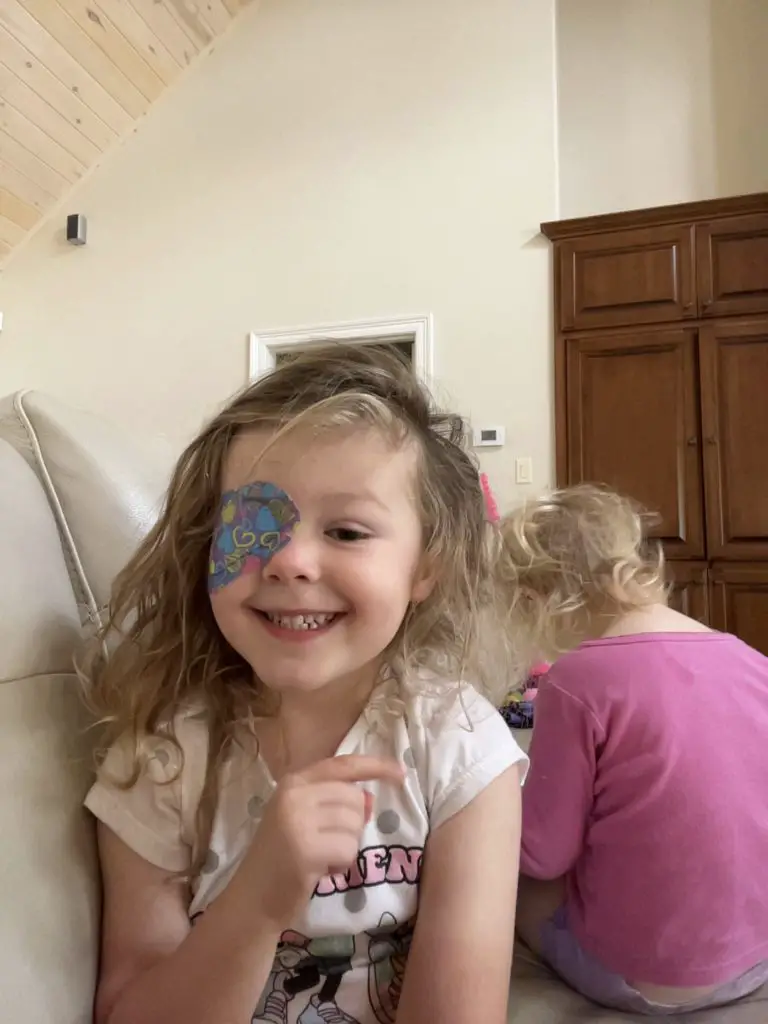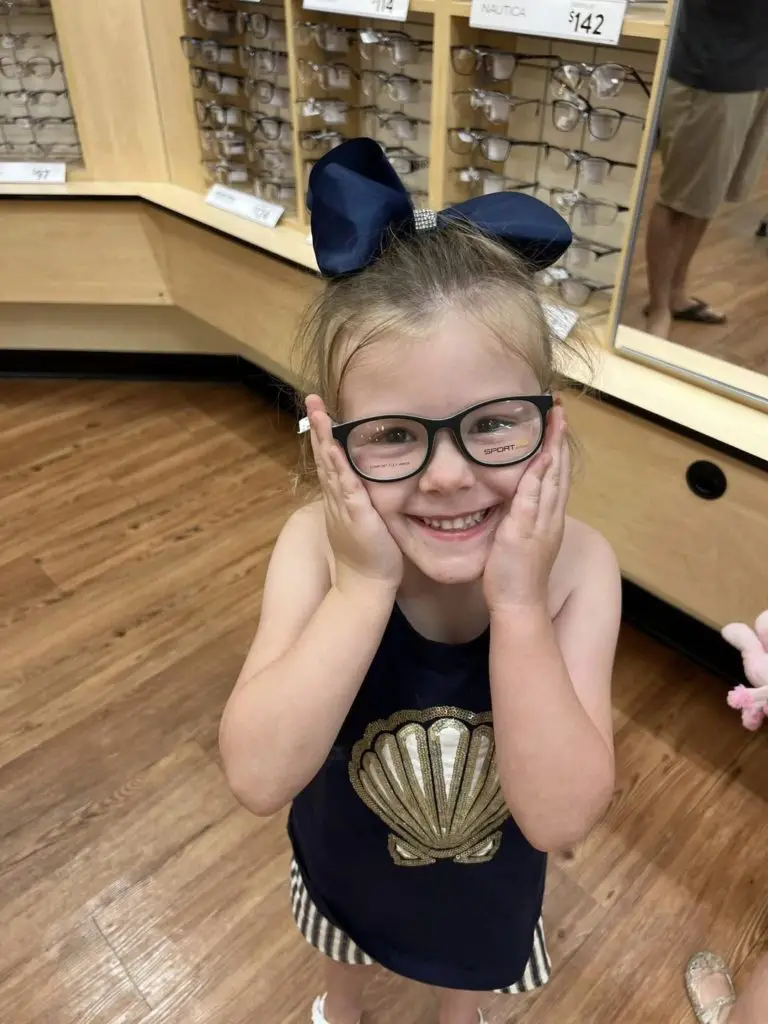Struggling to get your kid to wear their lazy eye patch? Ah, the dreaded eye patch. No child wants to wear one, but sometimes it’s necessary. If your child’s doctor prescribed an eye patch, you might be wondering how on earth you’re going to get them to actually wear it. Wearing an eye patch may not be the most fun thing in the world, but it’s important for kids diagnosed with amblyopia, or “lazy eye.” If your child’s doctor has prescribed an eye patch, here are a few tips to help make the process of getting them to wear it a little bit easier so that they can get on with their day-to-day lives.

Make your child understand the reasons to wear an eye patch
The first thing you need to do is make sure that your child understands why wearing the lazy eye patch is a good thing. If they don’t understand the importance of doing so, they’re not going to be very motivated to actually put it on. Sit down with them and explain the situation in simple terms. For example, you could say something like, “Your eye needs a break from seeing things up close all day long. Wearing an eye patch will help it rest so that it can get better.”
Once your child understands why they need to wear an eye patch, it’s time to make it fun! There are a lot of different ways you can do this. One option is to let them pick out their own eye patch from a store or online shop. This way, they’ll feel like they have some control over the situation and they’ll be more likely to actually want to wear it.
If your kids have been prescribed an eye patch, you may be wondering how to get them to actually wear it. After all, kids can be pretty stubborn, and the thought of wearing an eye patch may not be very appealing to them.
My mom made wearing my lazy eye patch FUN!

By following these tips, you should be able to get your kids to wear their eye patch with no problem. Just remember to be patient and keep at it, and eventually they’ll come around.
- Make it fun! Let your child pick out their own eye patch from a variety of different colors and designs. You can even let them decorate their patch with stickers if they’d like.
- Lead by example. If your child sees you wearing an eye patch (or sunglasses, for that matter), they’ll be more likely to want to wear one too. So put on your best pirate impression and get patching!
Get serious about your child’s eye patch
- Be consistent. It’s important your child wears their eye patch for the prescribed amount of time each day. Even if they’re not thrilled about it. Try setting a timer so they know when their patch-wearing time is up.
- Reward good behavior. If your child is being cooperative and wearing their eye patch as directed, be sure to give them lots of praise and encouragement. You could also try giving them small rewards like stickers or extra screen time as an added incentive.
- Use a sticker reward chart to make wearing an eye patch more fun.
- Play “I SPY”. Turn wearing an eye patch into a game. Ask them to find objects around the house that are a certain color. When they spot one, they can take off their patch for a minute or two to identify the object.
- Be positive. When kids see that you’re positive about them wearing their eye patch, they’ll be more likely to want to do it. Talk about how it’s helping their vision and how proud you are of them for doing it.
- Treasure Hunting is a way to turn wearing an eye patch into a game. You could set up a treasure hunt around the house for them to do while wearing their eye patch or create a scavenger hunt list for them to complete outside. The options are endless!

The importance of eye patches for lazy eye in kids
As a parent, you may be wondering why it is so important for your child to wear a lazy eye patch. After all, they are just kids and they should be able to see just fine without one, right? Wrong.
Eye patches are a vital part of treatment for lazy eye, also known as amblyopia. Lazy eye occurs when the brain favors one eye over the other, causing the weaker eye to become lazy. If left untreated, this can lead to permanent vision problems.
Wearing an eye patch forces the brain to use the weaker eye, which strengthens it and helps improve vision. In most cases, treatment with an eye patch is successful in improving vision in the affected eye.

How to help your child overcome amblyopia lazy eye
If your child is diagnosed with lazy eye, you may be wondering what you can do to help. There are a few things you can do to support your child during treatment and help them overcome lazy eye.
First, it is important to make sure that your child wears their eye patch as prescribed by their doctor. This may be several hours each day or even all day long. It can be difficult for kids to wear an eye patch, but it is important to stick with the treatment plan.
You can also help by encouraging your child to participate in activities that require using their weaker eye. This could include reading, drawing, or playing sports. These activities will help strengthen the weaker eye and improve vision.
READ | Amazon HD Fire 10 tablet is great for kids
The best eye patch for amblyopia lazy eye treatment
There are a number of different eye patches on the market that are designed to treat lazy eye. So, how do you know which one is best for your child?
Here are a few things to keep in mind when choosing an eye patch for lazy eye treatment:
The type of patch. There are two main types of eye patches: adhesive eye patch and non-adhesive. Adhesive eye patches are more comfortable and easier to keep in place, but they can be irritating to the skin. Non-adhesive patches may be less comfortable, but they won’t irritate the skin.
The material of the patch. Eye patches are typically made from cloth, vinyl, or silicone. Cloth patches are the most comfortable but can be more difficult to keep in place. Vinyl and silicone patches are less comfortable but stay in place better.
The shape of the patch. Eye patches come in a variety of shapes, including oval, rectangular, and butterfly-shaped. Choose a patch that will cover the entire affected eye without obstructing your child’s vision.
ORTOPAD for girls
ORTOPAD
- Made from soft, eco friendly bamboo. Hypoallergenic adhesive eye patch that lets the skin breathe
- Eye care professionals recommended ORTOPAD for over 20 years for the treatment of amblyopia
- Special light protection inlay assures maximum shielding from light
- Adhesive free from solvents, latex or natural rubber derivatives and preservatives
ORTOPAD for boys
ORTOPAD
Frequently Asked Questions about Lazy Eye and Eye Patches
Lazy eye, or amblyopia, is a condition in which the vision in one eye is not fully developed. This can happen if the eye is not used properly during early childhood, when the vision system is developing. Lazy eye typically affects only one eye, but it can occur in both eyes. Symptoms of lazy eye include poor vision in the affected eye, crossed eyes, or an inability to see objects in the periphery (side) of the visual field. Lazy eye usually develops before the age of six, and it is more common in boys than girls
Symptoms of lazy eye include poor vision in the affected eye, crossed eyes, or an inability to see objects in the periphery (side) of the visual field.
Lazy eye can be caused by several things, including an abnormal alignment of the eyes, a genetic predisposition, or a need for corrective lenses. It can also be caused by a cataract or other vision problem in one eye that makes it difficult to see
The most common treatment for lazy eye is an eye patch. The patch covers the stronger eye, forcing the weaker eye to work harder. This helps to improve vision. Other treatments include glasses, contact lenses, and surgery.
Untreated lazy eye can lead to permanent vision problems. The longer the condition goes untreated, the greater the risk of permanent vision loss. That’s why it’s so important to get your child treatment as soon as possible.
There are several things you can do to help prevent lazy eye in your child:
-Make sure they have regular eye exams. This will help to identify any vision problems early on.
-Encourage them to wear sunglasses or a hat when they’re outside. UV light can damage the eyes and lead to vision problems.
-Limit their time using electronic devices. Too much screen time can strain the eyes and lead to lazy eye.
If you have any questions about lazy eye, or if you would like more information about treatment options and resources for support, please contact your child’s doctor or a local ophthalmologist.
Parents can be successful with eye patches by being consistent
Wearing an eye patch doesn’t have to be a drag! Wearing an eye patch may not be the most fun thing in the world for your kid. It is important for kids diagnosed with amblyopia, or “lazy eye.” We hope that these tips have been helpful and that you’ll be able to get your little one wearing their eye patch in no time. Remember, when encouraging your child to wear a lazy eye patch, these tips are the keys to success:
- Start with short periods of time. Have your child wear the eye patch for a few minutes at first. Gradually increase the amount of time as they get used to it.
- Make it fun. There are lots of kids’ eye patches available in fun colors and designs. Let your child pick out their favorite so they’re more likely to wear it.
- Create a reward system. If your child wears their eye patch as directed, give them a small reward, such as a sticker or extra screen time.

